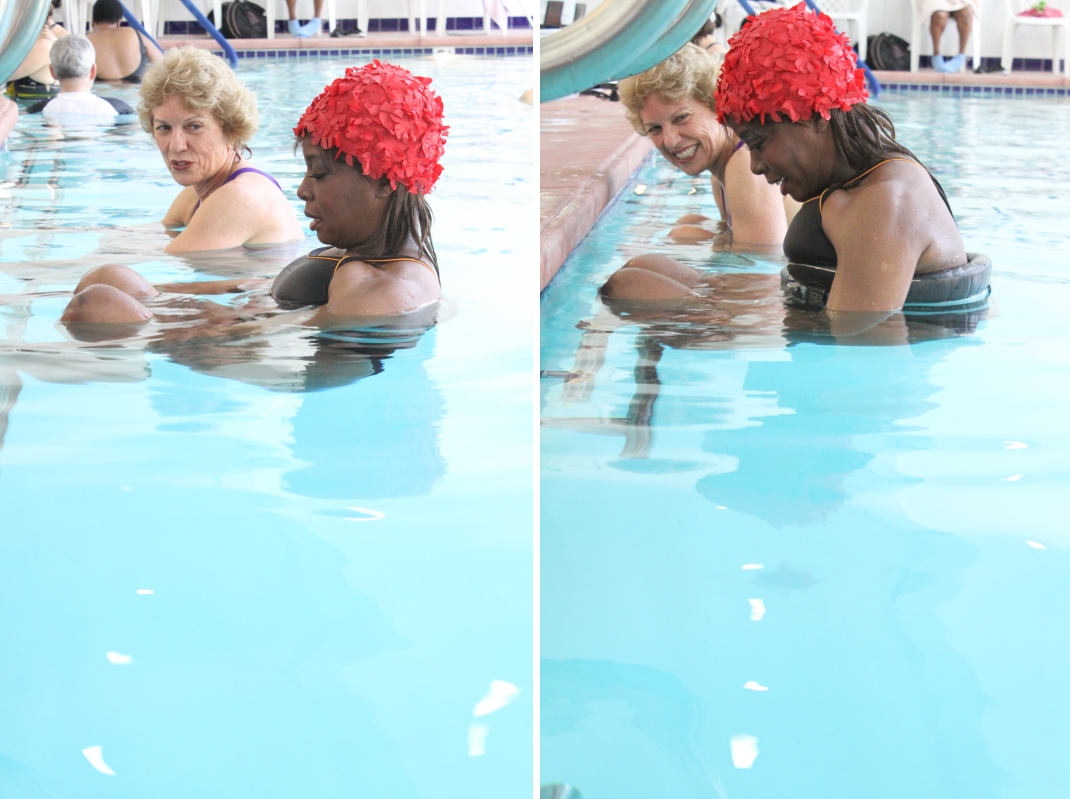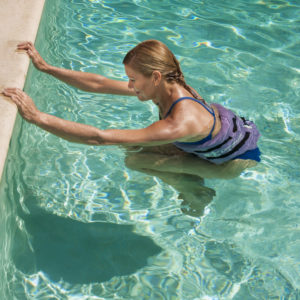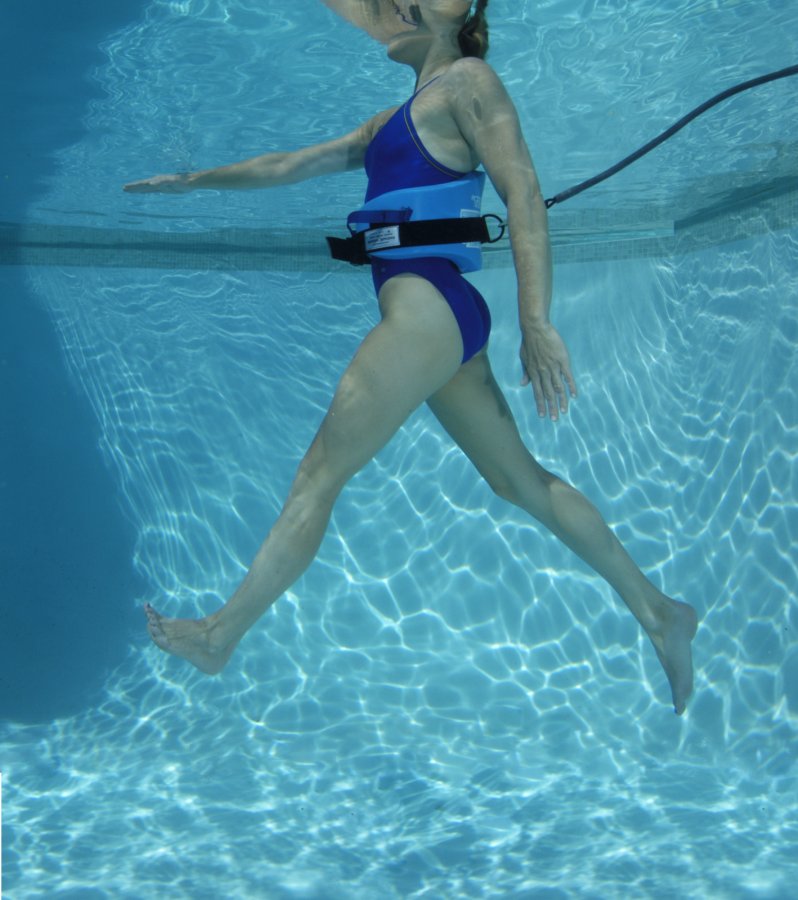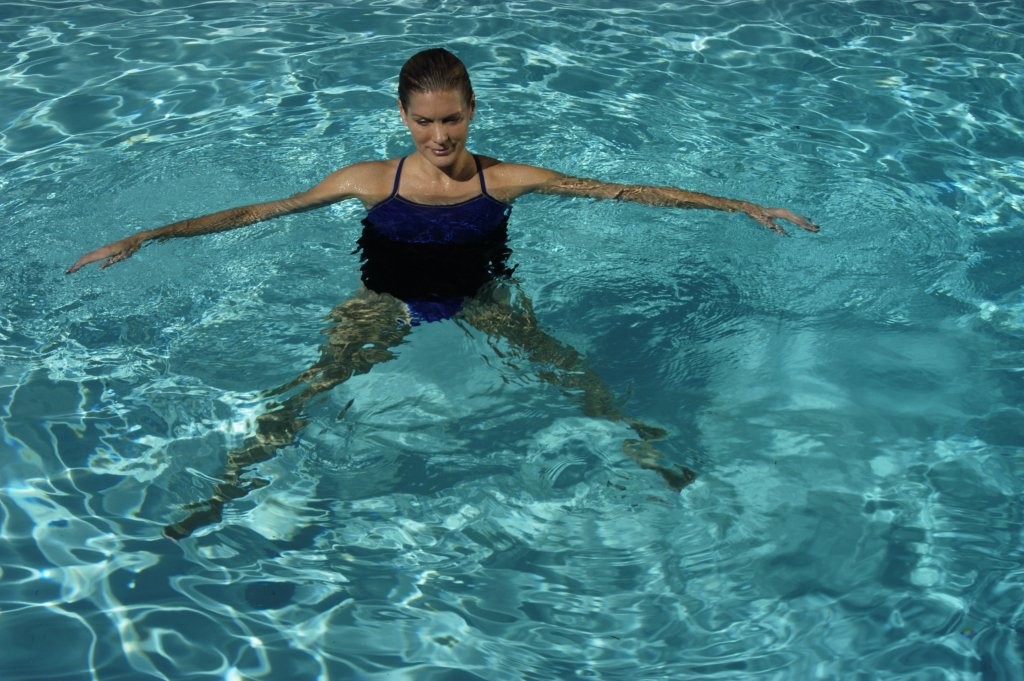Twenty-some years ago, I helped an active woman who lived in Los Angeles stay fit during the last five months of her pregnancy. Her doctor had discovered a meniscus tear in her right knee, but didn’t want to do surgery until after the baby was born. She turned to me and the gorgeous pool in her back yard overlooking the Pacific Ocean. What I knew then was that as long as I kept her weight off the knee and avoided fast movements, I could keep her in shape and do no damage.
I didn’t yet know that the fibrocartilage of the meniscus could become pain-free and functional again without surgery. But that’s what I learned working with my first client with a non-surgical torn meniscus. After our five months together, her doctor no longer saw a tear in the meniscus. It wasn’t that the fibrocartilage looked normal on the MRI – rather, it had become more like a callus that forms as a blister heals. But my client could run and mountain bike again without pain and that’s all that mattered to her. They never did the planned surgery.
Deep water is the best environment for
protecting weight bearing joints.There is no gravity and no impact.
In 2004, orthopedic surgeon Robert Klapper, M.D., chief of orthopedic surgery at Cedars-Sinai Medical Group, declared in our book, Heal Your Knees that any patient over the age of forty should not have surgery for a meniscus tear. Instead he sent them to my pool for rehabilitation. His theory? As we age, the cells in our collagen retain less water and become gritty. Therefore, if we bend and straighten the knee without putting any weight on it and continue to apply gentle force to that area where the “blister” (the torn meniscus) had been, it would become a toughened callus. I and my therapists began explaining his theory to knee patients and we have become more and more confident and successful over the years in preventing surgery for patients with meniscus tears.
The day after Christmas, 2013, the New England Journal of Medicine published a Finnish study that proved our theory. No, they didn’t explain it the way Dr. Klapper did, but they showed in a double-blind, randomized study that there was no significant difference between patients who had real surgery and those who had a fake meniscus surgery. This would have been a difficult study to do in America. It’s hard to sign people up if they might undergo a pretend surgery. Since many of the patients had epidural anesthesia and were awake in the operating room, the surgeons had to pretend to do the real surgery by asking for instruments, moving the knee as in a real surgery, and pushing a shaver without a blade against the patella.
Having an orthopedic surgeon such as Dr. Klapper take a strong stance on this issue makes it easier for our patients to accept. Our job then becomes providing them with the best possible physical therapy program we can offer, which is in our 92-degree saltwater pool. Why?
- By moving the knee without strain or gravity, the fibrocartilage of the meniscus is stimulated to rebuild the tissue into what could be called a “callus” rather than the “blister” where it had been torn.
- When patients wear a flotation belt in deep water, they can run and walk without any impact to the knee!
- The buoyancy of the water lets patients get into positions that would be impossible to achieve on land where they can stretch and strengthen the muscles surrounding their knees without any pain.
Deep water is the best environment for protecting weight bearing joints. There is no gravity and no impact. But if the available pool has shallow water only, modifications to exercises can be made so that people are leaning forward for running and backward for PowerWalk and Flies to keep their feet off the pool bottom.
Everyone wears flotation belts so they can concentrate on good form and not stay-afloat movements. If they have good balance in deep water, we tether them to the side of the pool for these exercises and they face the center. If they need to hold the bars or the side of the pool to balance, they will hold on and do only the lower body portion of these exercises.
Deep-Water Intervals – They learn to do Power Walk and Flies, which are straight-legged movements. If they can do a slow deep-water run without pain or undue stiffness in the knee, they’ll include that, too. Most patients with a torn meniscus experience chronic swelling, which gives them a feeling of “fullness” in the knee. Sometimes we don’t lift the knees as high while running to stay in a comfort zone for the patient. Interval training starts slowly and increases in speed and intensity as the knee heals.
Stretching – If there are bars on the sides of the pool, terrific. If not, people hold the coping or edge of the pool. The hamstring stretch and gastrocnemius stretch are in the program at the beginning. As pain and swelling diminish, a quad stretch can be added. The more advanced exercises – Body Swing and Curl & Stretch – take the knee into as much flexion as is possible and make any improvement visible. People can quite easily reach full flexion on these two exercises even when they couldn’t dream of trying such moves on land.

- Woman with torn meniscus and little flexion at the beginning of her program (left).
- Full flexion is possible six weeks later (right).
Deep Water Exercises – At first these non-weight bearing exercises are needed in the program, but as the person progresses, they can be eliminated in favor of exercises that gradually introduce weight bearing. There are heel lifts, bent-knee twists, straight-leg twists, abdominal curls and others that keep patients moving and strengthening the muscles around the knee without any weight bearing.
Kicking – For me, this is the best part. Anyone who wants to work their legs and buttocks hard will enjoy doing a full minute of each of these kicks: front flutter, slap kick (lift the heels out of the water toward the buttocks from a front flutter position), back flutter, bicycle, and scissors. As people progress, crank up the speed for the last thirty seconds of each kick.
Specific Rehab Exercises – No equipment is used for the first few weeks. The resistance of the water is enough as the patient does quad extensions, hamstring curls, and squats. As they need more resistance to further strengthen the muscles around the knees, we add resistance blades by AquaLogix around the ankles or the maximum resistance piece, the Hydro-Tone boot. These allow us to simulate the work that would be done in a weight room right in the pool. A portable plastic step goes into the pool to let patients work on step ups, step downs, step overs, and other exercises.
The deep-water and standing exercises above are where the person begins who has a torn meniscus. After about a month, it’s time to move to shallow water to introduce weight bearing movements. The float belt stays on when the transition is made to shallow water to keep the weight bearing to a minimum. They run in chest-deep water without bouncing, just running. They pick up speed each session and vary the length of the shallow-water intervals.
It’s amazing how fast and hard patients can run without feeling the knee! That’s when they start to realize they’re really on to something. Smiles abound as the light bulb goes on over their head. “Hey, my knee really will be able to do all my activities without surgery!” However, they are still not finished. The progression continues in order to create more and more musculoskeletal resilience.
Impact exercises – They’ll start doing lunges, jacks, squat jumps, side straddles, front straddles, V-kicks, frog jumps, and one-legged frog jumps. They start with ten repetitions and work up to twenty. Then the flotation belt comes off and they try them all over again, only ten reps at first because of the increased weight bearing on the knee. If they feel the slightest twinge, they move just slightly deeper to increase the buoyancy. Once again, they build up to twenty reps as they also begin jumping higher and moving faster.
After about two months, when all of this work is complete, the patient has long-forgotten that they had actually scheduled a meniscus surgery. They are back to their sports and recreational activities – and we are happy at having saved another person an unnecessary surgery.
Lynda Huey, M.S. pioneered the use of water rehabilitation in athletics with members of the USA track and field team. Next she worked with professional basketball, volleyball, tennis, baseball, and ice hockey players. Lynda has taught her water therapy techniques to thousands of coaches, trainers, therapists, and doctors around the world. In 1999, she founded CompletePT Pool & Land Physical Therapy in Los Angeles. Lynda authored six books on water exercise and rehab, two of them with orthopedic surgeon Robert Klapper, M.D., Chief of Orthopedic surgery at Cedars-Sinai Medical Group. Lynda’s Aquatic Rehab Online Course is available through LyndaHuey.com




